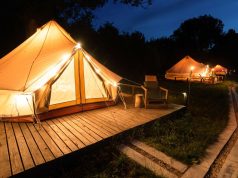Travel should be for everyone, regardless of mobility, sensory, or cognitive differences. In this comprehensive guide, we explore how to plan seamless, rewarding journeys that accommodate a wide range of accessibility needs. From choosing destinations with inclusive infrastructure to booking the right accommodations and finding adaptive experiences, you’ll gain the confidence to embark on unforgettable adventures tailored to your requirements.
Why Accessible Travel Matters
Inclusive tourism empowers travelers with disabilities to experience the world’s wonders safely and independently. According to global studies, nearly 15% of the world’s population lives with a disability, representing a vast community of potential travelers. By highlighting accessible options and advocating for better infrastructure, we help foster a travel culture that leaves no one behind.
Planning Your Accessible Journey

Careful planning is the cornerstone of any successful trip, especially when you have specific accessibility requirements. Start by listing essential needs: wheelchair ramps, roll-in showers, sign language services, or touch tours for the visually impaired. Craft a detailed checklist and reach out to providers early. Many hotels and tour operators offer specialized services—just ask.
Tips for Researching Destinations
- Check official tourism websites for an “Accessibility” section detailing ramps, elevators, and adapted transport.
- Read reviews from travelers with disabilities on forums, blogs, and social media groups.
- Contact local disability advocacy organizations for up-to-date advice on accessibility standards.
Top Disability-Friendly Destinations
Around the globe, certain cities and regions lead the way in inclusive tourism. Here are five standout destinations where accessibility meets adventure:
1. Barcelona, Spain
Known for its flat promenades and wheelchair-accessible beaches, Barcelona boasts ramps at major attractions like La Sagrada Familia and Park Güell. Accessible public transport includes low-floor trams and buses, plus tactile paving at key intersections.
2. Vancouver, Canada
With its scenic waterfront, wheelchair-friendly seawall, and extensive network of accessible parks, Vancouver is a nature lover’s paradise. The SkyTrain system offers level boarding, priority seating, and audible station announcements.
3. Tokyo, Japan
A model of efficiency, Tokyo’s public transit features elevators, wheelchair spaces on trains, and staff ready to assist with boarding. Many museums and temples provide tactile exhibits, braille signage, and audio guides in multiple languages.
4. Sydney, Australia

From the Opera House with its accessible boardwalk to Bondi Beach’s beach wheelchairs, Sydney caters to all. Ferries have ramps and designated spaces, while hotels near the harbor often feature roll-in showers and lowered countertops.
5. Reykjavik, Iceland
Compact and walkable, Reykjavik offers accessible geothermal pools with hoists, barrier-free museums, and sturdy boardwalks along the coastline. Guided tours to the Golden Circle can be customized for small groups with mobility aids.
Booking and Planning Tips
Effective planning reduces stress and ensures you’ll arrive prepared. Follow these steps when making reservations:
- Directly contact hotels and airlines to verify accessibility features rather than relying solely on third-party websites.
- Request detailed floor plans or images of adapted rooms to confirm door widths and bathroom layouts.
- Obtain written confirmation of special assistance, such as wheelchair boarding or sign language interpreters.
- Purchase travel insurance that covers medical equipment loss and emergency evacuation tailored to travelers with disabilities.
Choosing Accessible Accommodations
Not all hotels labeled “accessible” meet your specific needs. Here’s how to find the perfect home base:
- Entry and Room Access: Verify ramp angles, automated doors, and keycard systems positioned at reachable heights.
- Bathroom Features: Look for roll-in showers with fold-down seats, grab bars, handheld shower heads, and lowered sinks.
- In-Room Controls: Ensure thermostats, light switches, and phone controls are accessible from a seated position.
- On-Site Amenities: Check pool lifts, spa hoists, and accessible fitness centers if those are priorities for you.
Navigating Transportation with Ease
From local buses to long-haul flights, accessible transport options vary widely. Here’s what to consider:
- Air Travel: Book early to reserve aisle chairs or onboard wheelchairs. Notify airlines of any medical equipment and request pre-boarding assistance.
- Train and Bus: Research low-floor vehicles, lift-equipped coaches, and priority seating. Many national rail services offer free companion tickets for those with assistance needs.
- Car Rentals: Look for modified vehicles with hand controls, swivel seats, or vehicle lifts. Companies specializing in adaptive rentals can ship equipment to your destination.
- Ride-Sharing: Some platforms provide wheelchair-accessible vehicles on demand. Apps like Accessible Dispatch in select cities connect riders to adapted vans.
On-the-Ground Accessibility Tips
Once you arrive, these strategies will help you move confidently through new surroundings:
- Scout Your Route: Use Google Street View and wheelchair-accessibility filters on mapping apps to plan accessible paths.
- Ask Locals: Hotel concierges, taxi drivers, and community centers often know hidden accessible entrances and shortcuts.
- Carry Documentation: Have printed confirmation of medical equipment permissions, service animal credentials, or accessibility requests to avoid language barriers.
- Flexible Itinerary: Build in extra time for transfers and unforeseen delays—rushed schedules can add stress.
Essential Resources and Apps
Harness technology and community networks to enhance your journey:
- AccessNow: A crowd-sourced app mapping accessible restrooms, entrances, and services worldwide.
- Wheelmap: An interactive map highlighting wheelchair-accessible locations, complete with user ratings.
- Airbnb Accessibility Filters: Search homes with step-free entry, roll-in showers, and wide hallways directly on the platform.
- Local Disability Networks: Follow Facebook groups and forums dedicated to travelers with disabilities for up-to-date tips and meetups.
Conclusion: Empowering Every Traveler
Accessible travel isn’t just a trend—it’s a movement toward a more inclusive world. By researching destinations, advocating for your needs, and leveraging specialized resources, you can craft journeys that are both enriching and barrier-free. Whether you’re exploring a bustling city, soaking in coastal sunsets, or trekking through national parks, these tips will help you experience every adventure on your own terms. Happy travels!
Find the best accommodation deals with our Top Tech Tools and Apps for a Stress-Free Adventure.









